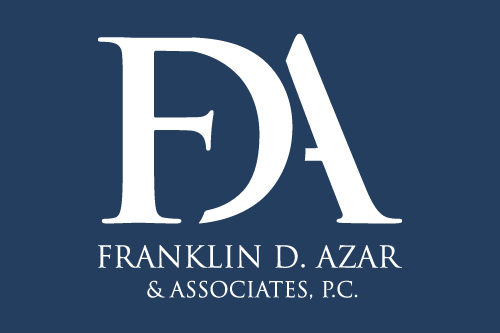Picture a driver cruising down the highway, listening to their favorite song on the radio. Suddenly, their phone buzzes with a new message. As they reach for it, thinking it’ll only take a second to check, they fail to notice the car in front of them slowing down. In that split second of distraction, their leisurely drive turns into a life-altering accident. This scenario, unfortunately, is all too common on our roads today. Distracted driving has become one of the leading causes of car accidents, resulting in countless injuries and fatalities each year.
Distracted Driving Guide
-
- Common Types of Distracted Driving
- Cell Phone Use
- Eating and Drinking
- Grooming
- Adjusting Vehicle Controls
- Rubbernecking
- Interacting with Passengers
- Daydreaming or Being Lost in Thought
- Reading
- Smoking
- Reaching for Objects
- The Consequences of Distracted Driving
- Increased Risk of Accidents
- Legal Consequences
- Financial Impact
- Physical Injuries
- Emotional Trauma
- Loss of Life
- What After a Distracted Driver Injures You
- How Franklin D. Azar & Associates, P.C. Can Help You
- Schedule a Free Consultation with a Car Accident Lawyer Today
Understanding Distracted Driving
Before diving into the specific types of distractions, you must understand what constitutes distracted driving. Simply put, distracted driving occurs when a driver engages in any activity that diverts their attention from the primary task of operating a vehicle safely. The National Highway Traffic Safety Administration (NHTSA) categorizes driving distractions into three main types:
- Visual Distractions: Anything that takes your eyes off the road
- Manual Distractions: Activities that require you to take your hands off the wheel
- Cognitive Distractions: Mental activities that take your mind off driving
Many distractions fall into multiple categories, making them particularly dangerous. For example, texting while driving is a triple threat, as it involves all three types of distraction. Even a momentary lapse in attention can have severe consequences. At highway speeds, a vehicle can travel the length of a football field in just a few seconds. If your attention is diverted during this time, you’re essentially driving blind, dramatically increasing the risk of an accident.
Common Types of Distracted Driving
1. Cell Phone Use
In our increasingly connected world, cell phones have become one of the most significant driving distractions.
- Texting: This is perhaps the most alarming form of distracted driving. On average, sending or reading a text takes your eyes off the road for 5 seconds. At 55 miles per hour, that’s like driving the length of a football field with your eyes closed. The cognitive distraction of composing a message, combined with the visual and manual aspects of typing, makes texting while driving a particularly hazardous activity.
- Talking on the phone: Even hands-free conversations can be a significant cognitive distraction, reducing your ability to process and respond to visual information.
- Using apps: From navigation to music streaming, modern smartphone apps often require significant visual and cognitive attention, taking your focus away from the road.
2. Eating and Drinking
While it might seem harmless, eating or drinking while driving is a manual and visual distraction. It takes at least one hand off the wheel and often requires you to look away from the road. Spills can create additional distractions and sudden movements that can lead to loss of vehicle control. Consider the following scenarios:
- Unwrapping a burger or sandwich
- Trying to eat messy foods that can drip or spill
- Reaching for drinks in cup holders
- Opening bottles or cans while driving
Each action requires you to take your eyes off the road and at least one hand off the wheel, significantly increasing your risk of an accident.
3. Grooming
Applying makeup, fixing hair, or any other personal grooming while driving is incredibly dangerous. These activities typically involve all three types of distraction. Common grooming activities that drivers engage in include:
- Applying makeup
- Shaving
- Brushing or styling hair
- Flossing or brushing teeth
These activities not only distract you from driving but also often require you to use the rearview mirror, further reducing your awareness of the road around you.
4. Adjusting Vehicle Controls
While necessary at times, adjusting the radio, climate controls, or navigation system can be a significant distraction. Modern touchscreen infotainment systems, while convenient, often require more visual attention than traditional knob-based controls. Consider these common scenarios:
- Changing radio stations or adjusting the volume
- Setting up a playlist or selecting music
- Inputting a destination into a GPS system
- Adjusting temperature or fan settings
While these may seem like quick, harmless actions, they all require you to take your eyes off the road and your hand off the wheel, even if only for a few seconds.
5. Rubbernecking
The urge to look at accidents, roadside incidents, or even interesting scenery can distract a driver. This visual distraction can lead to sudden braking or lane departures, potentially causing additional accidents. Rubbernecking is particularly dangerous because:
- It often occurs in high-traffic situations where accidents have already happened
- It can create a ripple effect, causing traffic to slow suddenly
- Drivers may not realize how long they’ve been looking away from the road ahead
6. Interacting with Passengers
Conversations with passengers, especially heated discussions or arguments, can be a major cognitive distraction. This is particularly true for teenage drivers with young passengers. Turning to talk to backseat passengers or dealing with children or pets in the car can add visual and manual distractions to the mix. Specific scenarios might include:
- Turning to discipline children in the backseat
- Reaching back to hand items to passengers
- Engaging in emotionally charged conversations
- Trying to calm a pet that’s moving around the vehicle
7. Daydreaming or Being Lost in Thought
Sometimes, the biggest distraction comes from within. Allowing your mind to wander, whether due to stress, fatigue, or simply zoning out on a familiar route, can be just as dangerous as any external distraction. This type of distraction is particularly insidious because:
- It’s not always obvious to the driver that they’re distracted
- It can occur even when both hands are on the wheel and eyes are on the road
- It often happens on familiar routes where drivers feel they can “autopilot”
8. Reading
Whether it’s a book, a map, or even road signs, reading while driving takes your eyes and mind off the task at hand. This includes trying to read billboards or detailed street signs while in motion. Examples of dangerous reading while driving include:
- Checking work documents or emails
- Reading text messages or social media posts
- Studying maps or written directions
- Focusing too intently on reading distant or complex road signs
9. Smoking
Lighting a cigarette, ash-flicking, and even the act of smoking itself can be a manual and visual distraction. The smoke itself can also irritate eyes, potentially causing further distraction. Consider these aspects of smoking while driving:
- Searching for cigarettes and a lighter
- The act of lighting a cigarette
- Ashing or disposing of cigarette butts
- Dealing with falling ash or dropped cigarettes
10. Reaching for Objects
Trying to grab something from the glove compartment, picking up a fallen object, or reaching into the backseat while driving can be extremely dangerous. These actions often involve taking your eyes off the road and at least one hand off the wheel. Common scenarios include:
- Reaching for a fallen phone or other item
- Searching for items in a purse or bag
- Trying to retrieve something from the glove compartment
- Reaching into the backseat for any reason
The Consequences of Distracted Driving
The consequences of distracted driving can be severe and far-reaching. Here are some of the potential outcomes:
1. Increased Risk of Accidents
Distracted drivers are significantly more likely to be involved in accidents. According to the NHTSA, distracted driving claimed 3,522 lives in a recent year alone. This statistic underscores the severe and often fatal consequences of taking your attention away from the road. The types of accidents commonly associated with distracted driving include:
- Rear-end collisions
- Lane departure accidents
- Intersection crashes
- Pedestrian and cyclist accidents
Each of these can result in serious injuries or fatalities, not just for the distracted driver but for innocent bystanders as well.
2. Legal Consequences
Many states have implemented laws against distracted driving, particularly regarding cell phone use. Violations can result in fines, license suspension, and even criminal charges in severe cases. Potential legal consequences may include:
- Traffic citations and fines
- Points added to your driving record
- Increased insurance premiums
- License suspension or revocation
- Criminal charges in cases of severe injury or death
Even if distracted driving isn’t explicitly illegal in your state, it can still constitute negligent behavior after an accident, leading to civil liability.
3. Financial Impact
Beyond potential legal fines, distracted driving accidents can lead to increased insurance premiums, property damage costs, and potential civil lawsuits. The financial repercussions may include:
- Repair or replacement costs for damaged vehicles
- Medical expenses for injuries sustained in the accident
- Lost wages due to inability to work
- Increased insurance premiums
- Legal fees and potential settlement costs in civil lawsuits
These costs can add up quickly, potentially causing long-term financial strain for the distracted driver.
4. Physical Injuries
Accidents caused by distracted driving can result in a wide range of injuries, from minor cuts and bruises to severe, life-altering conditions such as traumatic brain injuries or spinal cord damage. Common injuries resulting from distracted driving accidents include:
- Whiplash and other neck injuries
- Broken bones and fractures
- Traumatic brain injuries
- Spinal cord injuries
- Internal organ damage
- Cuts, bruises, and contusions
Many of these injuries can have long-lasting effects, requiring extensive medical treatment and potentially resulting in permanent disability.
5. Emotional Trauma
The psychological impact of being involved in or causing a serious accident can be long-lasting, potentially leading to conditions such as post-traumatic stress disorder (PTSD). Emotional consequences may include:
- Anxiety and depression
- Guilt and remorse
- Fear of driving
These emotional effects can persist long after physical injuries have healed, affecting various aspects of a person’s life.
6. Loss of Life
In the most tragic cases, distracted driving can result in fatalities, forever changing the lives of families and communities.
What After a Distracted Driver Injures You
After an accident caused by a distracted driver:
- Don’t admit fault: Avoid discussing who was at fault. Stick to exchanging necessary information with the other driver.
- Contact your insurance company: Report the accident to your insurance company immediately. Provide them with the facts of the accident but avoid giving recorded statements without legal assistance.
- Keep records: Maintain a file of all medical records, bills, and any correspondence related to the accident. This includes keeping a journal of how your injuries affect your daily life.
- Consult with a car accident attorney: An experienced Colorado car accident lawyer can help protect your rights and compensation for your injuries and losses.
- Be cautious with social media: Avoid posting about the accident on social media platforms. Insurance companies may use your posts to dispute your claim.
- Follow medical advice: Attend all recommended medical appointments and follow your doctor’s instructions. This helps with your recovery and also demonstrates the seriousness of your injuries.
- Don’t rush to settle: Insurance companies may offer a quick settlement, but it’s often in your best interest to wait until you understand the full extent of your injuries and losses before accepting any offers.
- Consider long-term impacts: When assessing your damages, consider not just current medical bills and lost wages, but also potential future medical needs and how your injuries might affect your earning capacity.
How Franklin D. Azar & Associates, P.C. Can Help You
At Franklin D. Azar & Associates, P.C., our experienced team of Colorado car accident lawyer is dedicated to helping victims of distracted driving accidents. We can assist you by:
- Investigating the accident and gathering evidence to support your claim
- Dealing with insurance companies on your behalf
- Calculating the full extent of your damages, including current and future medical expenses, lost wages, and pain and suffering
- Negotiating for a fair settlement or representing you in court if necessary
- Providing support throughout the legal process
We understand the nuances of these accidents and know how to build a strong case to prove the other driver’s negligence. We’re committed to fighting for your rights and ensuring you receive the maximum compensation possible for your injuries and losses.
Schedule a Free Consultation with a Car Accident Lawyer Today
Remember, there are time limits for filing personal injury lawsuits, so it’s important to act quickly. In Colorado, for example, the statute of limitations for most personal injury cases is two years from the date of the accident. Don’t let a distracted driver’s negligence impact your future. Contact Franklin D. Azar & Associates, P.C. today for your free consultation and let us help you on your path to recovery. Our team is available 24/7 to answer your questions and provide the guidance you need during this time.




